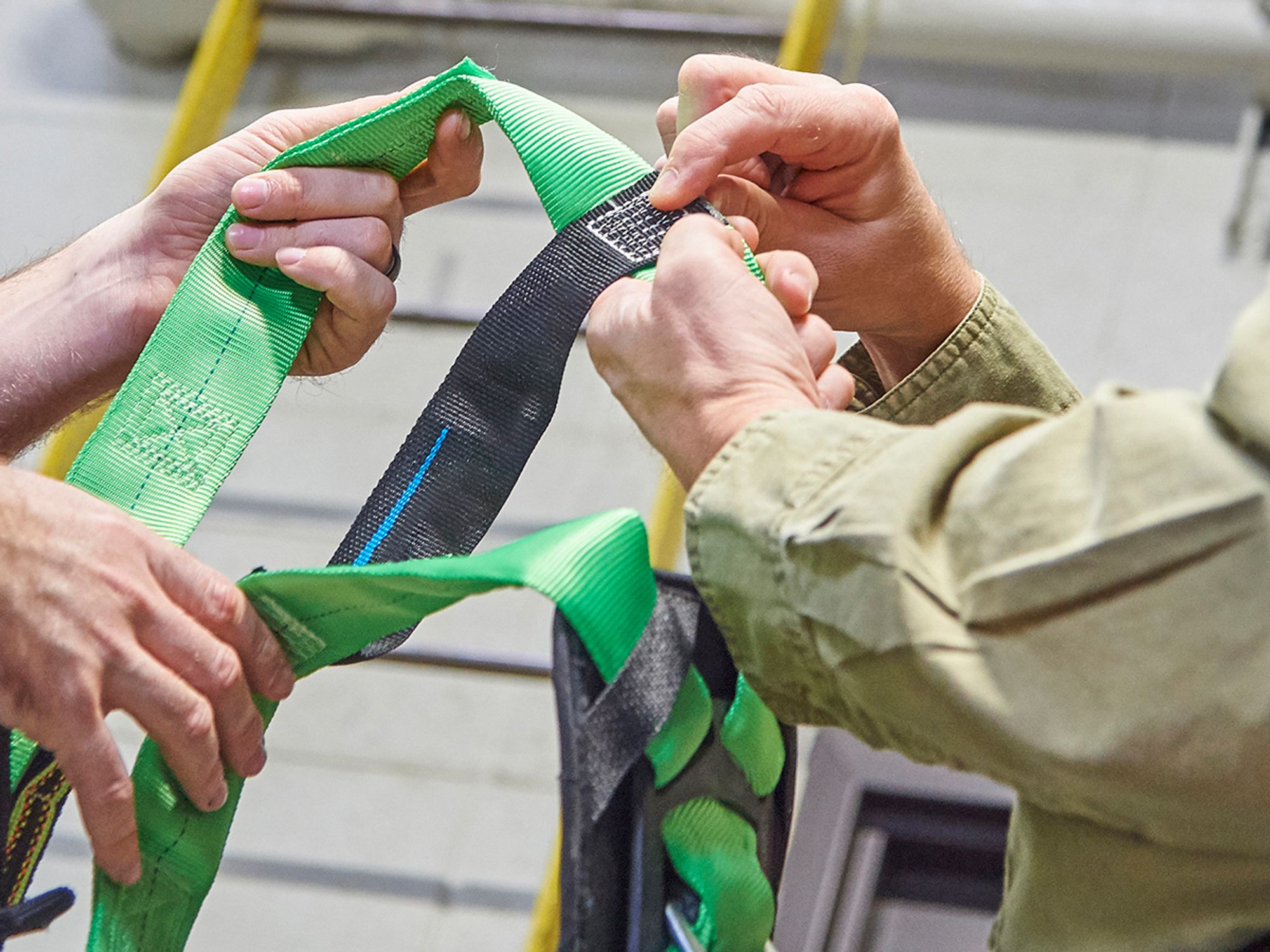Address General Industry fall hazards

- Fall protection rules require employers to evaluate the risk for falls and falling objects in their workplaces.
- Any found risks must be eliminated using various fall protection practices and systems.
- Employers must conduct safety training for employees and regular inspections of safety equipment.
The Occupational Safety and Health Administration (OSHA) requires that all General Industry employers conduct fall and falling object evaluations of their workplaces. The evaluations should determine potential risks from falling at the same level or onto a lower level, and from having objects fall on employees.
After determining the fall and falling object risks, the employer must take steps to eliminate risks and protect employees. Some methods include the use of:
- Good housekeeping
- Designated areas
- Guardrail systems
- Safety net systems
- Personal fall protection systems (personal fall arrest systems, travel restraint systems, and positioning systems)
- Ladder safety systems
In addition, the employer must:
- Train certain employees to recognize fall hazards and how to protect themselves,
- Train employees who use of fall prevention equipment or are otherwise required to be trained under the regulations, and
- Conduct inspections of the fall protection equipment; employees must inspect fall protection equipment before initial use on each shift.
Note: Fall protection on trains and trucks (such as flatbeds or trailers) is not covered in Subpart D, so the existing OSHA enforcement policy remains. If the use of fall protection is feasible, it must be used (for example, when a trailer is inside or adjacent to a building, the use of fall protection may be feasible).
In summary, employers must:
- Survey work areas to identify any tasks that require workers to work four feet or more above the surface. Make sure guardrails or other acceptable fall protection are in place and in good condition.
- Look for areas where employees are exposed to dangerous equipment, such as pickling or galvanizing tanks, degreasing units, and similar hazards. Fall protection is required regardless of height over dangerous equipment.
- Remind workers of housekeeping policies.
- Survey the work area for holes that can be filled or covered.
- Identify processes that create wet floors. If surfaces cannot be kept clean or dry, determine a suitable method to avoid or minimize worker exposure.
- Make sure aisles are designated and kept clear and in good condition.
- Become familiar with floor loading capacities and make certain they are not exceeded.
- Ensure ladders are maintained and used properly.
- Follow proper safety procedures for scaffold setup and use.
All personal fall protection systems, including body belts, harnesses, and other components used must meet the requirements of Subpart I, Personal Protective Equipment–1910.140.
